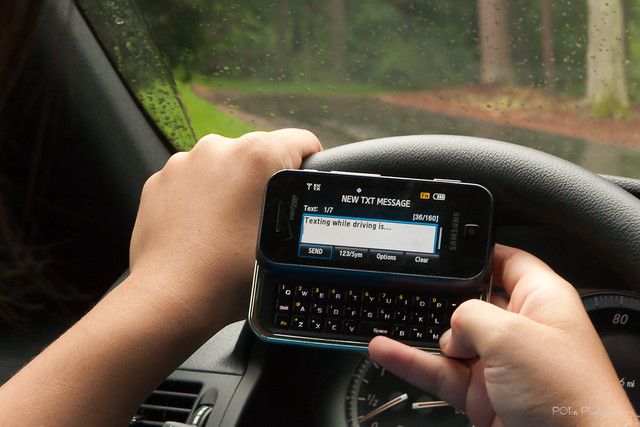Op-Ed: Devices Distract Drivers, And It’s Time For Harsher Measures

The introduction and use of personal communication devices that began some 20 years ago continues to evolve. As is customary with technological advances, it’s largely a blessing, but, regrettably, it may also be a curse with potential hazards.
Near the top of the danger list are driver distractions during cell phone use without a hands-free device, texting and other smart phone capabilities. The National Highway and Safety Transportation Administration estimated that drivers are four times more likely to be in an accident when using a cell phone.
Before seat belts became a national habit about 25 years ago, most drivers ignored them, until they got ticketed as law enforcement began a crackdown. Today, even with stricter laws, some motor vehicle operators continue to drive with one hand on the wheel and the other holding a cell phone, despite the availability of numerous accessories that could curb the risk.
In spite of distracting hazards regularly pointed out by the media, and laws passed to prevent it, the peril continues to endanger the public, vehicular passengers and drivers.
There have been campaigns to ban cell phone use, regardless of whether or not it’s hands-free, and other driver distractions by federal and state officials, but the efforts, so far, have not had enough support. Safety advocates, such as the AAA (American Automobile Association), have lobbied lawmakers for stronger punishments and high-tech measures that would cut off mobile technology for a car owner with four violations. That’s using sensible advanced technology to combat potential advanced technology hazards.
In New York, distracted driving persists though legislation aimed at violators appears to be making a difference. Last year, the state legislature introduced stiffer distracted driving penalties and, according to recent statistics, the results are positive. Statewide, the number of tickets issued since last summer has more than doubled to 115,000, with New York City comprising 62 percent of those cited.
Fortunately, Brooklyn drivers did not win the dubious bragging rights in this instance; we placed second to Manhattan drivers.
Before the stricter law, drivers only received a summons when stopped by police. But, now, anyone caught using a handheld device while driving gets a mandatory three points tacked on to their license. So, not only does the offense cost the driver a fine, but, in most cases, their car insurance rate will also likely rise.
Governor Andrew Cuomo recently said he hoped these tickets send a resounding message to drivers, “Keep your eyes on the road and your hands on the wheel.”
Obviously, the New York State Police supported and enforced the stronger law. Hopefully, officers will continue to dutifully issue summonses to distracted drivers as diligently as they do for seat belt violations — not to boost ticket quotas, but, ultimately, to save lives.
Driver distraction seems to be a more serious danger when teenagers are behind the wheel. The main cause of teenage deaths nationwide for decades has been car accidents. But, in 2011, after eight years of decline, the number increased, largely due to distracted driving.
We’re all familiar with pedestrians who stroll along, busily texting and not paying attention as they nearly bump into passersby, but when a driver’s keying in letters and symbols, it becomes a peril when they swerve or drift into adjacent lanes.
Since the productive MADD (Mothers Against Drunk Driving) campaign was a primary reason for a reduction in the number of alcohol and drug-related crashes over the years, some of its activists should start an offshoot crusade aimed at multitasking drivers. After all, when someone’s preoccupied — cell phoning, texting, grooming or eating — behind the wheel of a vehicle that weighs well over a ton, it not only endangers their life, but also jeopardizes drivers in the vicinity.
There used to be a common warning aimed at drivers, Speed Kills, which was later co-opted in the War on Drugs with a whole other meaning. As long as there are drivers that reality will always prevail because there are unsafe — some bordering on reckless — drivers on the road at some point.
Nevertheless, distracted drivers are gaining fast — too fast — on that enduring menace.
We Americans get pleasure from our cars and the freedom of the open road they offer, but some motorists need to reduce distractions, as much as they should reduce speed to the posted limit, if they hope to remain safe in the driver’s seat.
Neil S. Friedman is a veteran reporter and photographer, and spent 15 years as an editor for a Brooklyn weekly newspaper. He also did public relations work for Showtime, The Rolling Stones and Michael Jackson. Friedman contributes occasional columns on life, culture and politics in Sheepshead Bay.




